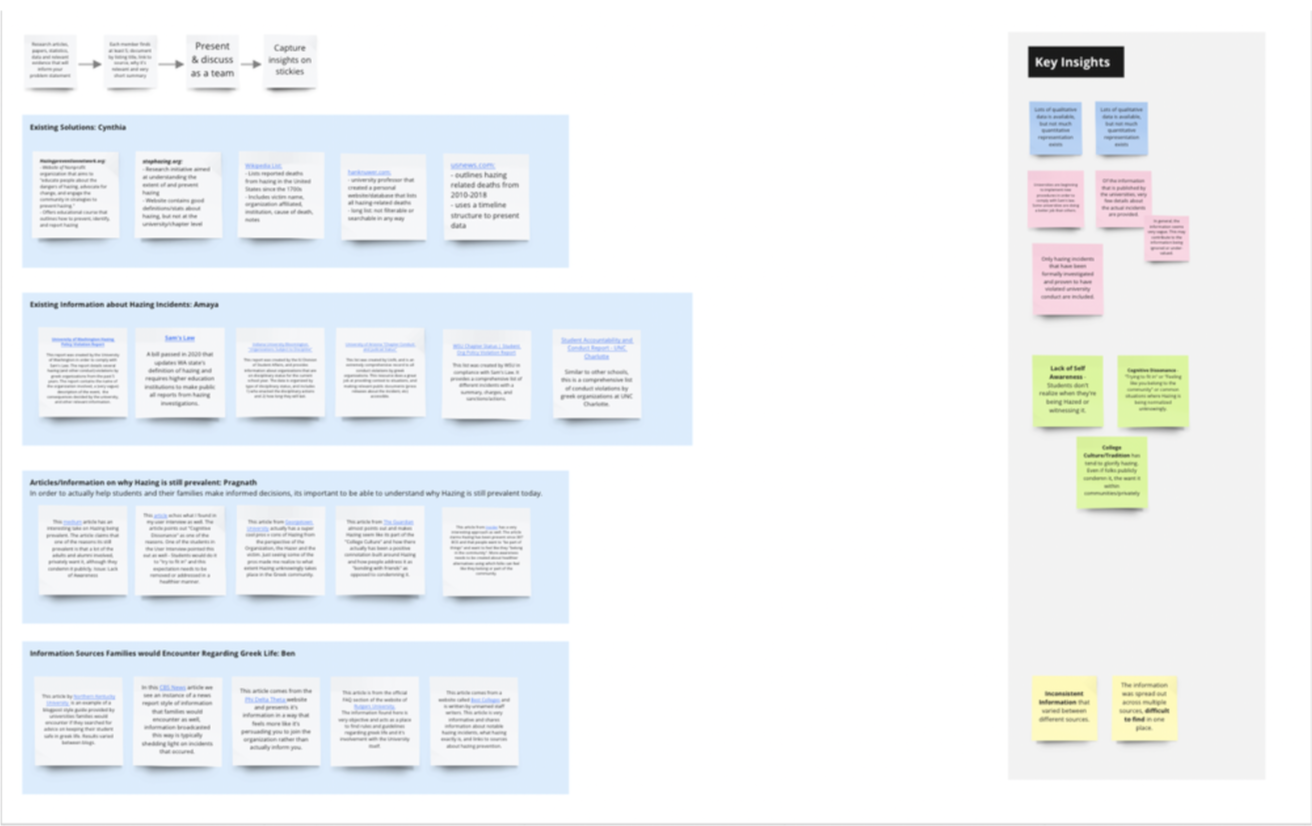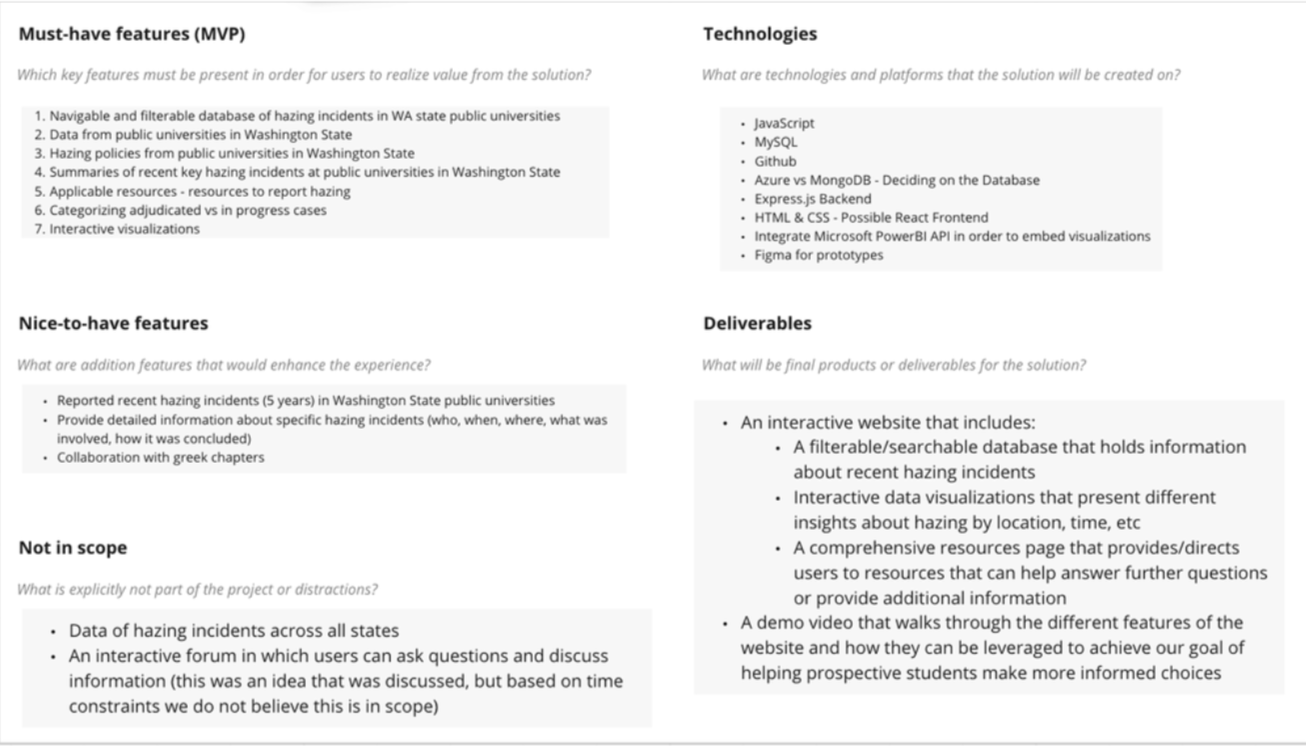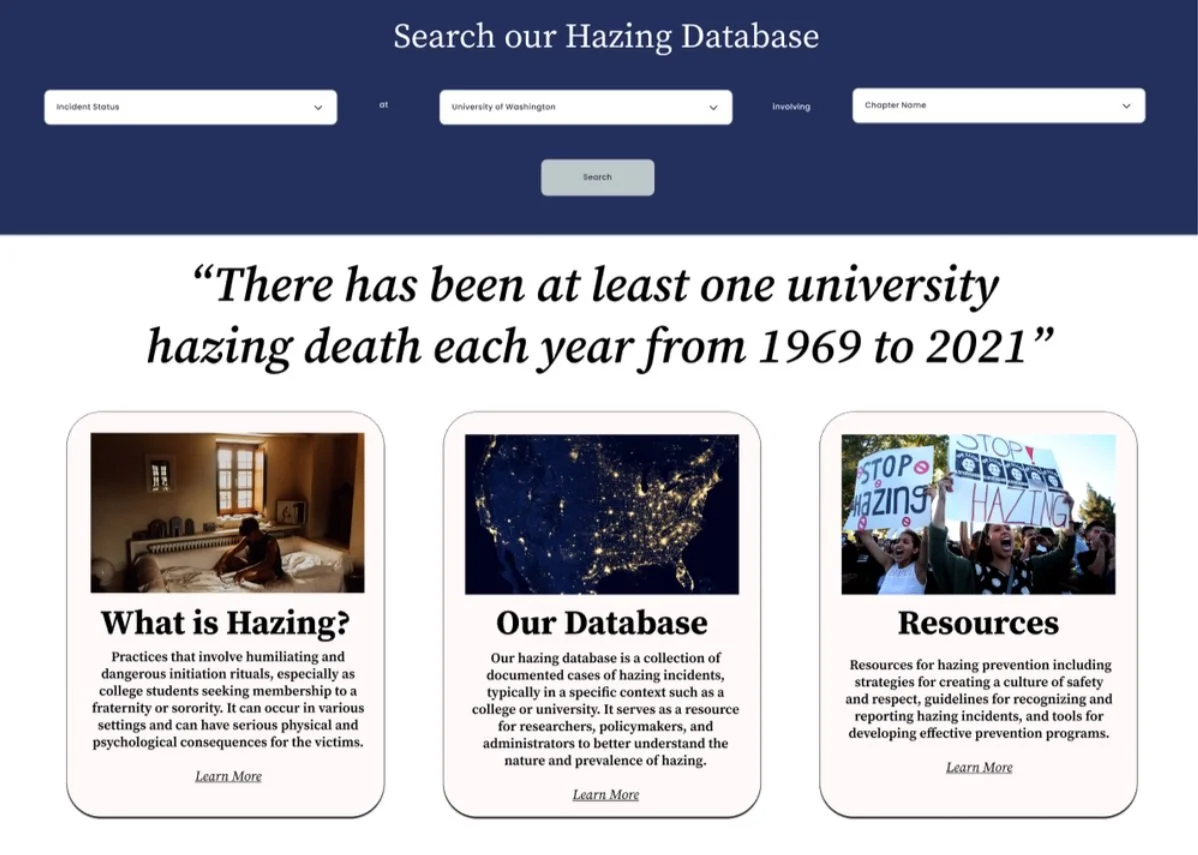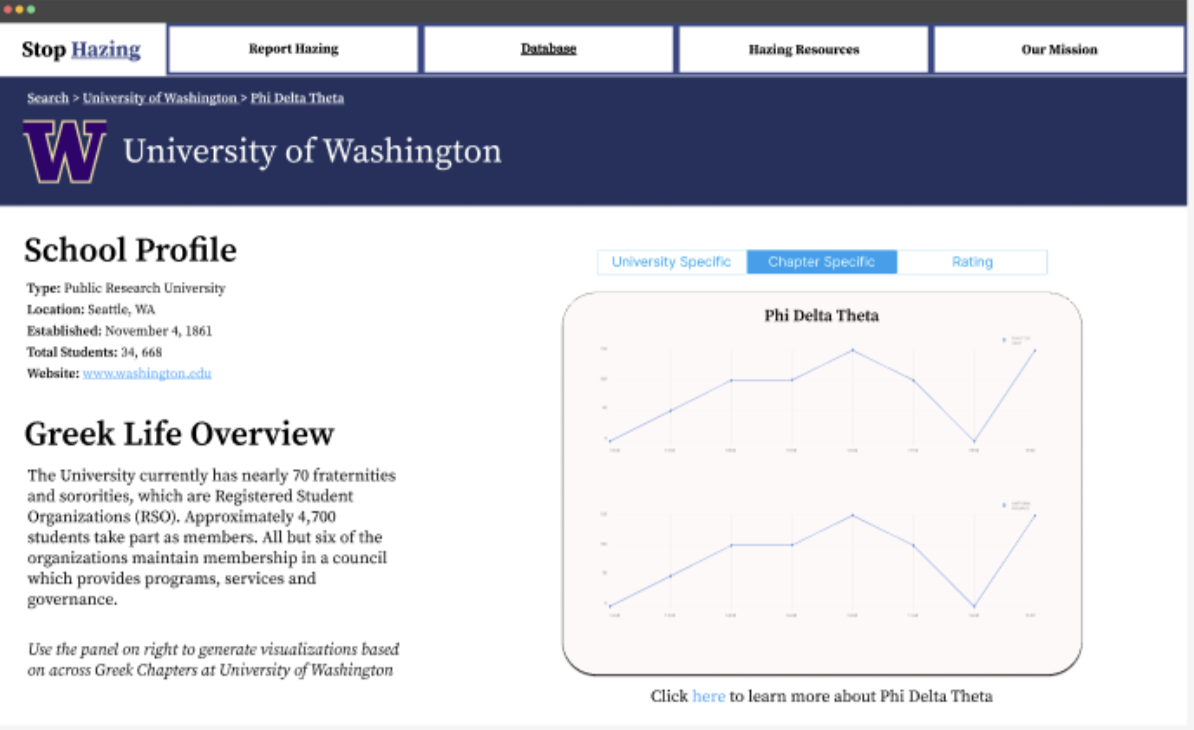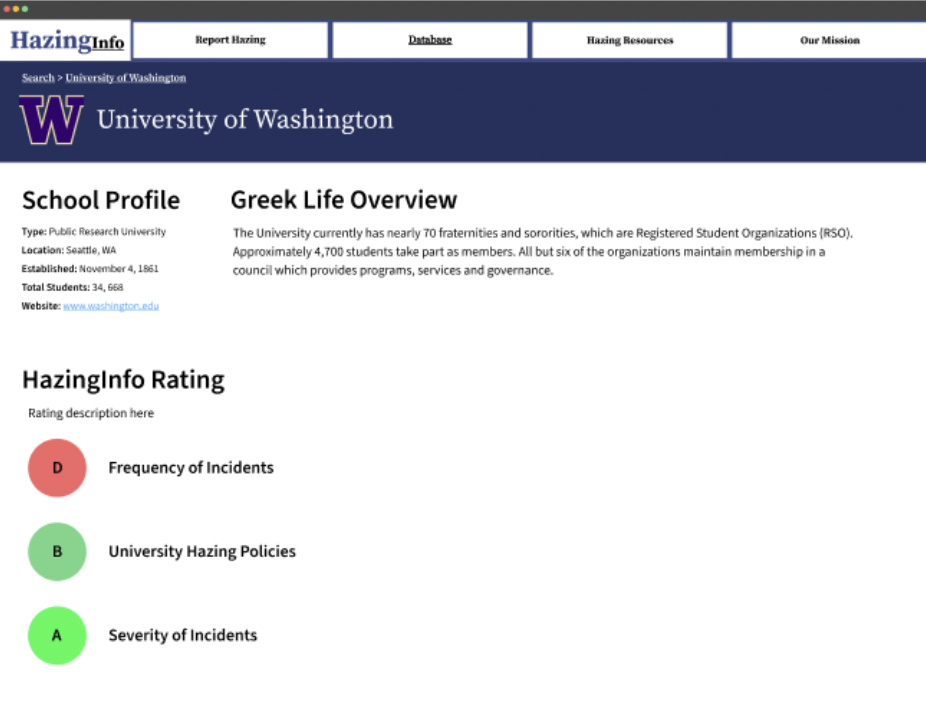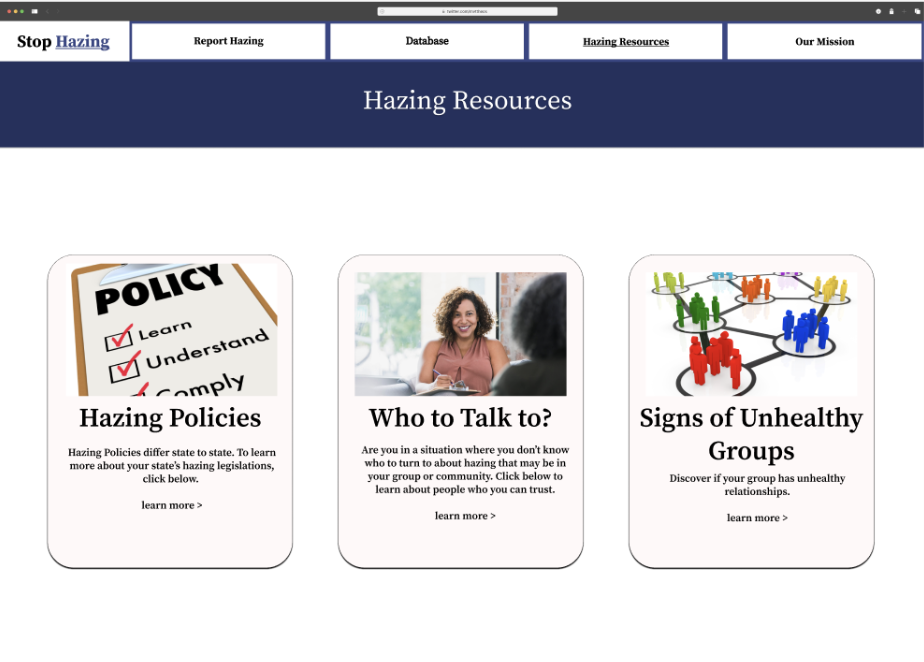HazingInfo
Team Members
Ben Bunyatipanon
Amaya Kejriwal
Cynthia Chung
Pragnath Chintalapati
Sid Jayadev
My Roles:
UX Designer
UX Researcher
Tools:
Adobe InDesign
MongoDB
Figma
Miro
Duration:
November 2022 - May 2023
01 Introduction
Overview
I worked with on a team of 10 as a UX Designer for the hazing database HazingInfo. Made in honor of Sam Martinez, a student who passed away due to a hazing incident at WSU, HazingInfo provides prospective greek life students and families with access to transparent hazing information so that they can make an informed decision about joining greek life.
Our project had the opportunity to be shared widely including a publication by The University of Washington’s School of Informatics, at the iSchool’s yearly capstone presentation as well as through a Local News Report by KING5 News shown above.
Problem Statement
How might prospective greek life students and their families access transparent hazing information so that they can make an informed decision about joining greek life?
02 Research
User Personas
To identify our target audience, we stepped into their shoes and defined two key personas: prospective Greek life students and their parents. By adopting their perspectives, we gained deeper insights into their needs and expectations. This understanding guided the development of our final product, shaping its scope and ensuring it delivered the relevant information they sought.
Literature Review
We conducted a literature review to gather insights on hazing prevention strategies and user behavior patterns, using this research to inform the design process. These findings helped us identify key user needs and pain points, driving a user-centered approach to the platform's UX design. By addressing these insights, we ensured the platform would deliver both functionality and meaningful impact for its users.
Market Research
In our market research approach, we prioritized understanding the target audience by analyzing industry trends, competitor strategies, and consumer behavior. By combining quantitative data with qualitative insights, we uncovered opportunities for differentiation and developed strategies that aligned seamlessly with user needs and market demands.
Key Research Insights
Through user interviews, an assessment of existing resources, and competitive analysis, we identified gaps in the field and opportunities to address them. Our findings revealed the need for a centralized database offering users highly accurate, quantitative, and objective data on hazing—filling a critical void with a comprehensive and reliable resource.
03 Ideation
Project Plan
When developing our project plan, we prioritized features for our minimum viable product (MVP), focusing on those that were essential 'must-haves.' We also identified 'nice-to-have' features to address if time allowed, clarified what was out of scope, and outlined the technologies required to build our product. Additionally, we defined our final deliverable based on the timeline to ensure a clear and achievable path to completion.
User Flow
Before starting on the initial designs of our product, we created a detailed user flow to outline every page and the key data required for seamless navigation. This process helped us determine which pages should be included in the navigation bar and how search functionality could be optimized with effective filtering options. By mapping out the user journey, we ensured the website would be intuitive and user-friendly from the start.
04 Early Development
Low Fidelity Wireframing
We began with low-fidelity wireframing in Figma, creating a barebones, unpolished version of our website that included all the key features and necessary data before refining the design. This initial version allowed us to conduct early user testing, ensuring the website's structure made sense before focusing on the UX aesthetics. It also incorporated our grading system algorithm, which analyzed hazing incident data and assigned a grade to each school.
Concept Validation
Through early user testing, we were able to validate our concepts and identify key insights to carry forward into later stages of design and development. Feedback from potential users and stakeholders played a crucial role in shaping the direction of our design. Leveraging this input, we developed guiding questions that became instrumental as we refined our approach, iterating on designs and features to ensure continuous improvement as we worked toward the final product.
05 Minimum Viable Product
06 Final Product
The Final Product
This product is now live and has been handed off to our stakeholders for further development and ongoing maintenance. This project was incredibly meaningful to me, as we had the opportunity to collaborate with the amazing family of Sam Martinez to turn their vision into a reality, ensuring that a tragic hazing incident like theirs never happens again, and that no other families have to endure what they did. After immense dedication and hard work by the Martinez Family, "Sam’s Law," an anti-hazing bill, was officially signed into law by President Joe Biden on December 24th, 2024. Please feel free to visit the website for yourself linked below.


